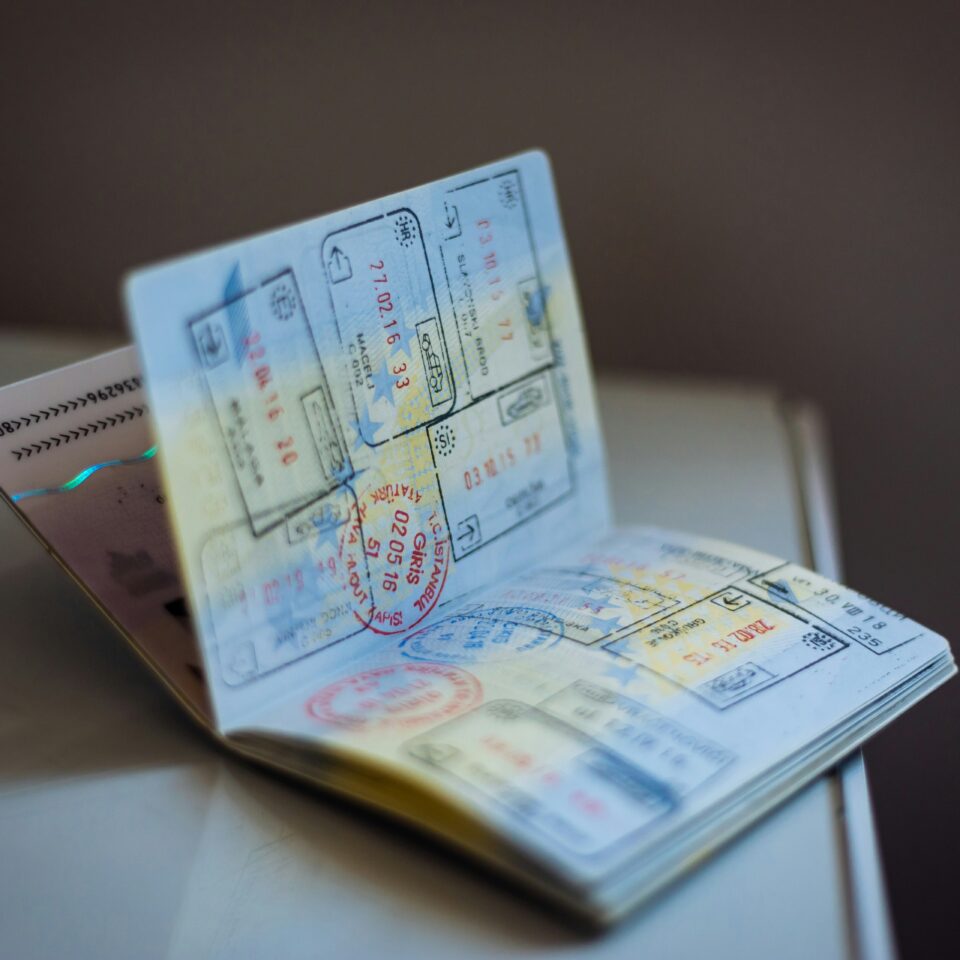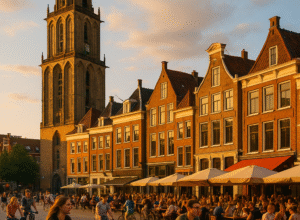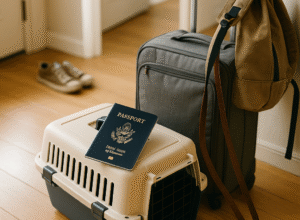Mastering the Math That Keeps You Legal in Europe
Whether you’re planning a two-week European vacation or contemplating a permanent move to the Netherlands, the Schengen Zone will shape your experience in ways you might not expect. This invisible border system affects everything from your travel plans to your residency options – and yet many Americans remain confused about what it actually means.
You’ve likely heard the term “Schengen” thrown around in travel forums or expat groups, often tangled up with discussions about the European Union. Maybe you’ve wondered why your passport gets stamped in Amsterdam but not when you take a train to Brussels. Or perhaps you’re trying to figure out if those three months in Italy count against your time in the Netherlands.
The Schengen Zone isn’t just bureaucratic jargon – it’s a practical reality that directly impacts how you’ll experience Europe. Understanding its rules can mean the difference between a smooth extended stay and an unwelcome conversation with immigration officials.
What the Schengen Zone Actually Is (and Isn’t)
First, let’s clear up the biggest misconception: the Schengen Zone and the European Union are not the same thing. Think of them as overlapping circles in a Venn diagram rather than identical concepts.
The Schengen Zone is essentially Europe’s borderless travel area. Named after the Luxembourg village where the original agreement was signed in 1985, it allows free movement between 27 European countries without passport checks at internal borders. When you fly from New York to Amsterdam and then take a train to Paris, you only show your passport once – at Schiphol Airport.
The EU, on the other hand, is a political and economic union. While most EU countries are in Schengen, notable exceptions exist:
- Ireland opted out (preferring to maintain border controls with the UK)
- Romania, Bulgaria, and Cyprus are EU members but not yet in Schengen
- Croatia just joined Schengen in 2023
Even more confusing for Americans: some non-EU countries are Schengen members:
- Norway
- Switzerland
- Iceland
- Liechtenstein
The 90/180 Rule: Your Countdown Clock in Europe
Here’s where things get practical for American travelers. As a US citizen, you can spend 90 days within any 180-day period in the entire Schengen Zone without a visa. This isn’t per country – it’s cumulative across all Schengen nations.
The calculation works on a rolling basis, which trips up many Americans. You can’t simply spend 90 days in Europe, leave for 90 days, and return for another 90 days. Instead, immigration officials look backward 180 days from any given day and count how many days you’ve been in Schengen during that period.
Example: If you spend March through May (90 days) in the Netherlands, you can’t return until September. But if you spread those 90 days across six months, you maintain more flexibility.
Why the Schengen Zone Exists: A Brief History
The Schengen Agreement emerged from a fundamentally European problem: how to maintain security while enabling the free movement essential to economic integration. The original five countries (France, Germany, Belgium, Netherlands, and Luxembourg) signed the agreement in 1985, but implementation took a decade.
The fall of the Berlin Wall accelerated the process. Europeans wanted to ensure that the newly unified continent wouldn’t return to the checkpoint-heavy borders of the Cold War era. By 1995, the first borders opened, and the zone has gradually expanded since.
For Americans used to showing ID at state lines being purely theoretical, Schengen represents what interstate travel feels like in practice. The difference? These are sovereign nations choosing to pool their border sovereignty.
Common American Misconceptions
Let’s address the confusion that frequently pops up in expat forums:
“I can reset my 90 days by visiting the UK” Partially true. The UK was never in Schengen (even before Brexit). A UK visit doesn’t count toward your Schengen days, which is good news. However – and this is crucial – it doesn’t “reset” your clock either. Time spent outside Schengen allows older days to fall off your rolling 180-day calculation, but there’s no magical reset button. If you’ve used 60 days in Schengen, spend 30 days in the UK, then return to Schengen, you still only have 30 days left (not a fresh 90).
“Each country gives me 90 days” Absolutely not. Your 90 days cover the entire zone. Three months in France means zero days left for the Netherlands.
“Weekend trips don’t count” Every day counts, even if you’re just passing through. That Amsterdam layover? It counts.
“I can extend my tourist stay easily” Unlike some countries, Schengen tourist visas are rarely extended except for emergencies. Plan accordingly.
Implications for Americans Moving to the Netherlands
If you’re contemplating a move to the Netherlands, Schengen affects you differently. A Dutch residence permit allows you to:
- Live in the Netherlands without the 90-day restriction
- Travel freely throughout Schengen as a resident (not a tourist)
- Spend up to 90 days in any 180-day period in other Schengen countries
However, your visa application process still involves Schengen-wide background checks, and overstaying as a tourist can jeopardize future residence applications.
Countries In and Out: The Quirks of European Geography
Understanding who’s in and who’s out helps you plan multi-country trips:
Schengen Member States (2025):
- Austria
- Belgium
- Bulgaria
- Croatia
- Czech Republic
- Denmark
- Estonia
- Finland
- France
- Germany
- Greece
- Hungary
- Iceland
- Italy
- Latvia
- Liechtenstein
- Lithuania
- Luxembourg
- Malta
- Netherlands
- Norway
- Poland
- Portugal
- Romania
- Slovakia
- Slovenia
- Spain
- Sweden
- Switzerland
Note: Bulgaria and Romania achieved full Schengen membership on January 1, 2025, allowing for unrestricted travel within the zone.
Out of Schengen:
- UK and Ireland (the “Common Travel Area” duo)
- Some Balkan countries (though this is changing)
- Romania and Bulgaria (EU members working toward Schengen entry)
The reasons vary: some countries chose to opt out (UK wanted to maintain border controls), others are working to meet requirements (newer EU members), and some have geographic considerations (island nations like Cyprus).
Tracking Your Days: Practical Tools and Tips
Managing your Schengen days requires attention to detail. Here are practical strategies:
- Keep every passport stamp and boarding pass Some borders might not stamp, but airlines and trains can provide proof of travel dates.
- Use a Schengen calculator app Several free apps help track your days and calculate future availability. The European Commission’s official Short-Stay Calculator is the most reliable option.
- Document everything Hotel receipts, credit card statements, and even social media posts can prove your whereabouts if questioned.
- Plan buffer days Don’t cut it close. Delayed flights or unexpected changes can push you over the limit.
- Understand entry/exit days Both your arrival and departure days count as full days in Schengen.
Avoiding Overstays: The Consequences Are Real
Overstaying your Schengen allowance isn’t just a minor inconvenience. Consequences can include:
- Fines (varies by country, but often €500-3000)
- Deportation and travel bans (typically 1-5 years)
- Difficulty obtaining future visas or residence permits
- Problems with other countries that share immigration data
Dutch immigration officials are generally reasonable but follow EU-wide regulations strictly. “I didn’t understand the rules” won’t help at passport control.
Looking Forward: Your Schengen Strategy
Whether you’re planning a grand tour of Europe or considering making the Netherlands your new home, Schengen awareness should inform your planning. For tourists, it means strategic trip planning to maximize your European experience. For potential expats, it means understanding how tourist stays affect residence applications.
The Schengen Zone represents something uniquely European: the belief that free movement strengthens rather than weakens security and prosperity. As an American navigating this system, you’re experiencing firsthand how different countries can approach borders compared to what you’re used to back home.
Remember: information is your best tool. Track your days carefully, plan ahead, and when in doubt, ask immigration officials before you travel rather than after you’ve overstayed. The Netherlands welcomes American visitors and residents alike – as long as you play by Schengen rules.







